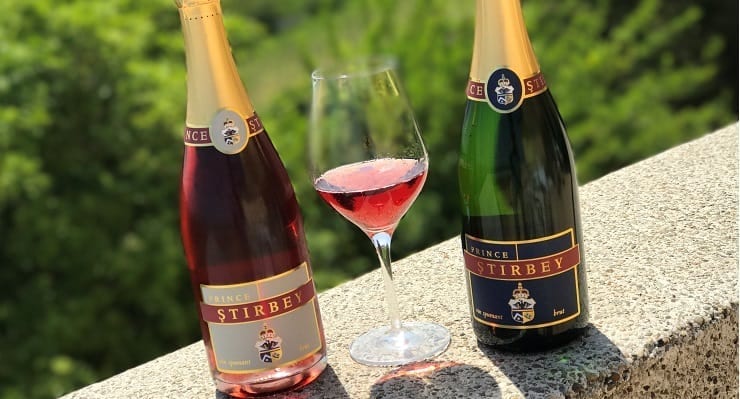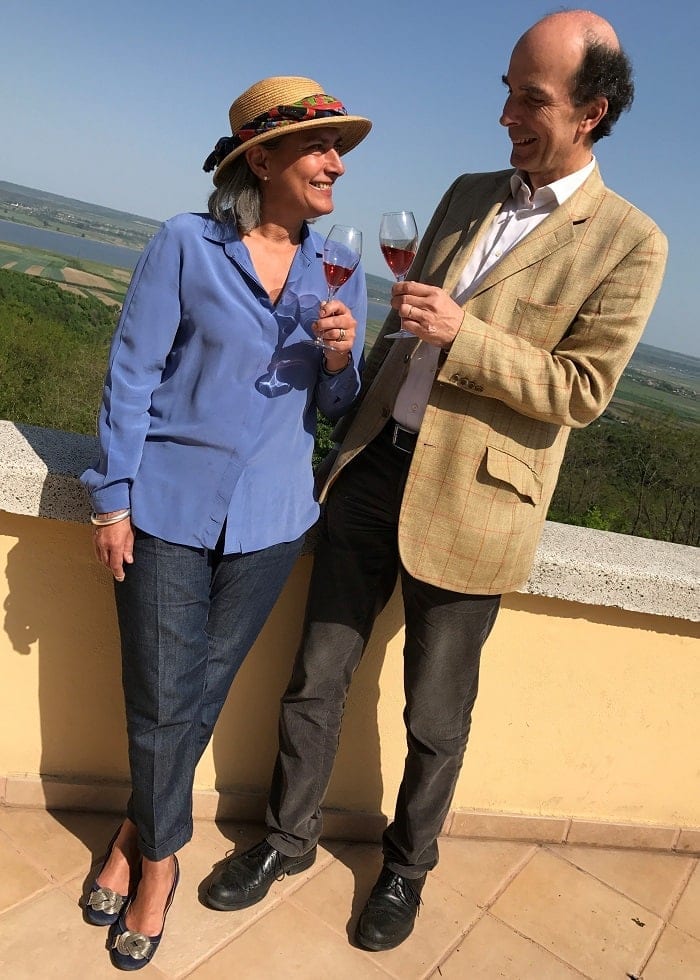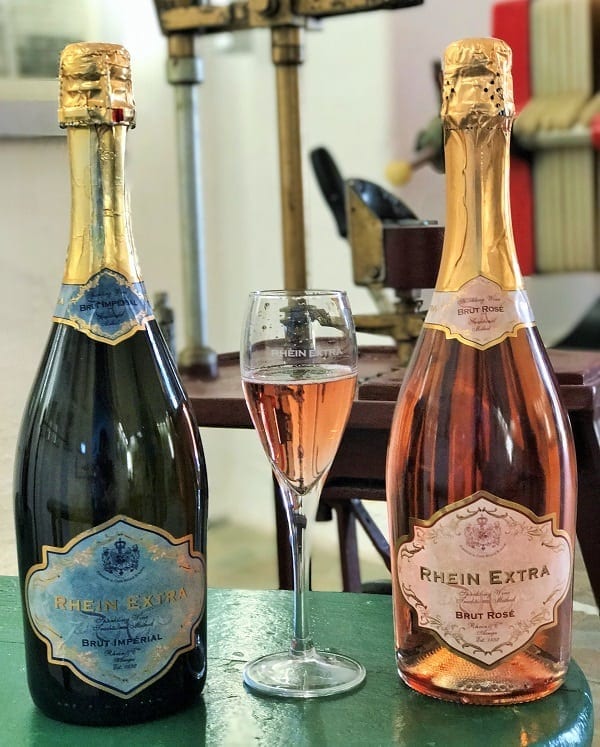Romania’s Wine Revolution
15th May 2017

Few people think of Romania when it comes to wine, but according to OIV (International Organisation of Vine and Wine), as of 2016, Romania was the 13th largest wine producing country in the world!
Romania’s wine industry was severely impacted by the country’s politics and is, to some degree, still felt today, due largely to the reputation of Communist-era mass-produced, low-quality wine and the lack of investment in wine education for homegrown oenologists. However, in the last 10 years, with Romania becoming part of the European Union in 2007, this has given the wine industry a massive boost, stimulating local and foreign investment. Romania now has a great potential to produce fabulous, quality and premium wines and with no exception, sparkling wines, as I found out on my recent trip to Romania.
Cramele Recas
Located at the foot of the Carpathians in Western Romania, you’ll find one of those making huge inroads in wine production, Cramele (Winery) Recas. Documents suggest the winery was already in existence with a receipt for the purchase of land dated to 1447!

Headed up by Commercial Director and co-owner, Philip Cox, originally from Bristol, Philip entered the business some 30 years ago as a beer salesman in Germany, but saw great potential in Romanian wine. He was impressed by the buoyant optimism that existed at the time, despite the terrible conditions he found, but more so due to Romania’s geographical location (on the same latitude as France). He now finds himself leading the way with one of the largest wineries in Eastern Europe, no small feat!
Philip has seen his winery grow substantially due to his wine being fruit driven, easy drinking, clever marketing on labels, beguiling the fact that the wines are Romanian. He led me to a cellar on the property, where I saw quite literally hundreds of bottles, all with differing labels, across 68 distinct wines, made from 23 different grape varieties, destined for different countries.
Focusing on sparkling wines, Philip introduced me to Muse 2014, a sparkling wine made from 100% Chardonnay, a Romanian ‘Blanc de Blancs’. Using the Traditional Method, utilising a second, in bottle fermentation, to produce the bubble, each bottle is then aged on yeast lees for a minimum of 24 months before being disgorged and aged further under cork. 2014 was its first production, the wine had a honeyed nose with lime blossom and white peach. Fresh, floral and elegant, a deliciously refreshing, yet rich palate and a clean, satisfying finish.
To celebrate the 25th anniversary of Cramele Recas, Philip released Domeniile Recas, an homage to the town, the terroir and history, with a sparkling white made from 100% Chardonnay, and a rosé made with predominantly Cardaca, blended with Cabarnet Sauvignon and Cabarnet Franc.
Both sparklings are produced using the Charmat Method, in which the secondary fermentation takes place in stainless steel tanks. Here, carbonation occurs biologically from the decomposition of sugar from added yeasts. The must then undergoes slow fermentation in pressurised, stainless steel tanks.
The Domeniile Recas white sparkling was straw yellow with greenish highlights. The bubble was fine and persistent topped with a lovely mousse. On the nose were notes of acacia, green apple, with light aspects of toast. Acidity supports the entire body, keeping the aromatic intensity, refreshing notes of light citrus presenting a balanced and long finish.
The Domeniile Recas rosé sparkling on the nose had red fruit tones coming through, strawberry, raspberry, red currant, with slight vegetal notes. Good acidity, refreshing, with a finish of reminiscent of red currant.
A great deal of passion and integrity went into these sparkling wines, reminiscent of the efforts of Paul and his team at Cramele (Winery) Recas, to establish themselves as an authority on Romanian wine, producing quality and superior sparkling wines that are elegant and easy drinking, which can be easily paired with international dishes.
Prince Stirbey.
It’s not every day that I get to meet members of the aristocracy, let alone a couple so passionate about their landscape, their wines and so involved in its production. In the decade since Romania became part of the European Union, there’s been quite a significant momentum in wine production, small-scale producers that would never have stood a chance during the days of Communism. Such is Romanian royal Baroness Ileana Kripp-Costinescu, who, with her Austrian husband, Baron Jacob Kripp , now manage the completely family-run, Prince Stirbey winery, set in Tuscan style hills in the foothills of the Transylvanian Alps near Dragasani, where the family has owned vineyards for around 300 years.

Together with their winemaker, Oliver Bauer from Germany, (who has his own winery now producing some 30,000 bottles per year, just down the country lane), Ileana and Jacob are able to produce natural, clean wines from strictly selected top quality grapes, making up to 100,000 bottles per annum, of which only up to 4000 bottles are sparkling.
Baroness Ileana explained that the region had a long tradition of producing sparkling wines, in the traditional method, but during the Communist era, this all changed focusing more on volume, cheaply made wines from blends they weren’t even sure of! But some of the better-made wines were reserved for the Communist elite of the area.
In 2007 Prince Stirbey started experimenting with local grape varieties, primarily with Cramposie to produce sparkling wines, finding this grape variety quite acidic but exuberant, perfectly suited to the processes of the ‘champenoise’ method.

Oliver has produced a sparkling white wine made from local Cramposie grapes, produced using the traditional champenoise method. After the wine has aged in the bottle for 24 months, it is riddled by hand for two weeks and then disgorged. For the dosage, only the same sparkling wine is used, without adding any sugar, resulting in a ‘brut’ nature.
What results is dry, creamy with plentiful, tiny bubbles. Cream, peach and honeysuckle. Vivacious acidity, with a light body and medium finish.
The sparkling rosé, made from Novac grapes, a grape that is notoriously difficult to handle, not only in the vineyard but also in the winery, where the dark-fruit aromas may be lost, is probably why Prince Stirbey is currently the only producer of a varietal wine.
Having aged 6 months in French oak barrels, they undergo their second fermentation in bottles. After 26 months of ageing on the lees in the bottles, again riddled by hand over a two-week period, and then disgorged.
The result is a sparkling wine with an elegant bouquet of fresh, subtle red forest fruits on the nose, a fine and persistent perlage and a pleasant balance on the palate.
And befitting such a distinguished brand and style of wine, Prince Stirbey sparkling and still wines wine were once served aboard the legendary Orient-Express during its heydey in the inter-war years, poured to wealthy passengers as they travelled across continental Europe.
Halewood Rhein Extra
Located on the upper Prahova, in the Bucegi Mountains, a terrain that you wouldn’t expect to find a winery, you arrive at Rhein & Cie, an Alpine looking warehouse, very unassuming, but on arrival, you can get a sense of the history, the culture that oozes from within the 125-year-old building.
Rhein & Cie Azuga Cellars 1892 by Rhein Extra is the oldest and most recognised brand of sparkling wine in Romania. The special characteristics of the sparkling wine produced here have been recognised since 1906 when the company won the highest award at the ‘Romanian General Exhibition’. At that time, the ‘sampanie’ Rhein was regarded as the only top brand of sparkling, being indigenous and natural, produced using the traditional method. To top off its early success, Rhein Extra, is known to have been included in the menu of coronation ceremony of King Ferdinand in Alba-Iulia on October 15th, 1922 and is still today, the official sparkling wine of the Romanian Royal Court. Further adding to its prestige, Rhein Extra was too served on board the Orient Express during its golden age of travel back in the 1920’s & 30’s, original menus proudly framed and hung around the dining area of the restaurant in the winery.

Today Rhein & Cie is owned and managed by Halewood, a Liverpool based wine importer, who took over the wine producer back in the 1990’s. And just like some well-known Champagne Houses, Rhein Extra is run by a successful team of women, Adriana Grecu, Magdalena Constantinescu & Roxana Murgulet, ensuring that the same commitment to quality and prestige is the same today as it was in Rheins’ past.
The company bases its sparkling wine production on dry white wines from Sebes-Apold region in Transylvania for the Rhein Extra Brut and the Pinot Noir from Delau Mare (where Halewood’s biggest vineyard is located) for the Rhein Extra Rosé.
Everything here is done by hand, even the riddling, that can number up to 30,000 bottles per day. No small feat as I witnessed a demonstration from the lady herself who has been with the Rhein since the 1970’s, beggars to question how many she has riddled over that time!
As a result of the natural fermentation processes in the bottle, the Rhein Extra Brut Imperial embodies a Chardonnay cuvée, a variety high in natural acidity. The Brut Imperial is distinctively characterised by pale lime hues and an aroma encompassing peaches, ripe pears and almonds. Its fruity, fresh taste is harmoniously completed by its appealing creamy consistency, fine and persistent perlage with a long-lasting finish
The Rhein Extra Rosé made from 100% Pinot Noir, has structure, volume and depth. An award-winning wine, including a bronze at the Pinot Nir Masters in 2014, on the nose there was lots of hazelnuts, crusty bread, wild strawberry and watermelon notes. Finished off with pleasant acidity leaving behind hints of strawberry, cherry and grapefruit.
Having visited other wineries in Romania, including Avincis located at Vila Dobrușa. Avincis vineyards are found the right bank of the Olt river, the largest tributary of the Danube in Romania; the Drăgăşani vineyard extends between the Getic Sub Carpathians in the north and the Romanian plain in the south. The winemaker is a young Frenchman from Alsace, by the name of Ghislain Moritz. Educated at the Domaine Devillard in Burgundy (France) and at Conceito da Veiga, in the Douro valley (Portugal), his enthusiasm and dedication at Avincis was something to behold, and so were his still wines! Full of character, bold fruity flavours using indigenous grape varieties as well as international, they certainly had plenty of French flair. He did mention that they were in the midst of producing their first sparkling wine, it was currently ageing on lees, and had been for the last 18 months. So, I’m sure we are in for a belter when it is finally released.

Having spent 5 days in Romania visiting the vineyards, the wineries, experiencing the culture and talking to the people behind the Romanian Wine revolution, the industry is in very capable, passionate hands, producing some fine sparkling wines, which are already awards winners, and some that I have no doubt will be more appreciated and enjoyed in the UK. There certainly is no lack of passion and desire to produce high quality, superior wines, and I quote OZ Clarke “Romania has amazing vineyards where previously no one was making the best of them”.
![]()
Glass of Bubbly
Executive editor of news content for the website Please enjoy the articles that we share - We hope you find our love for Champagne & Sparkling Wines both interesting and educational.
